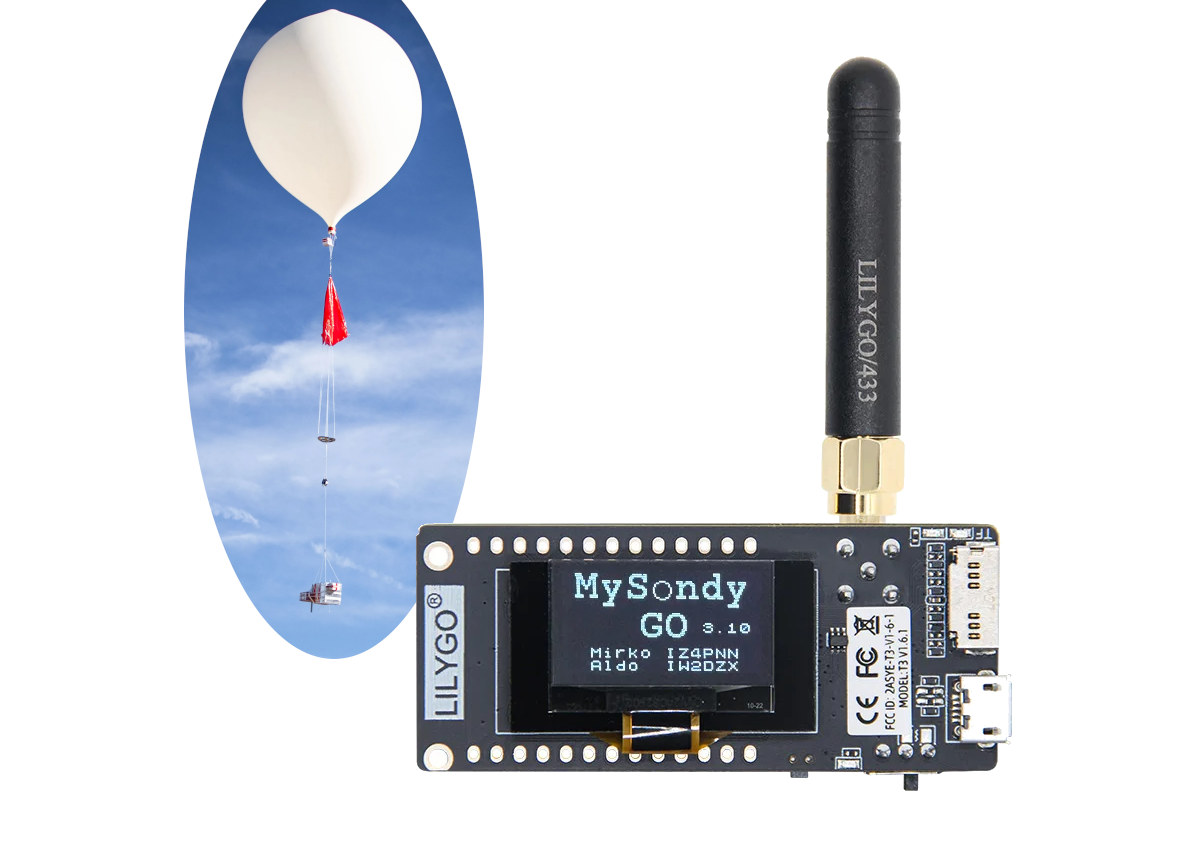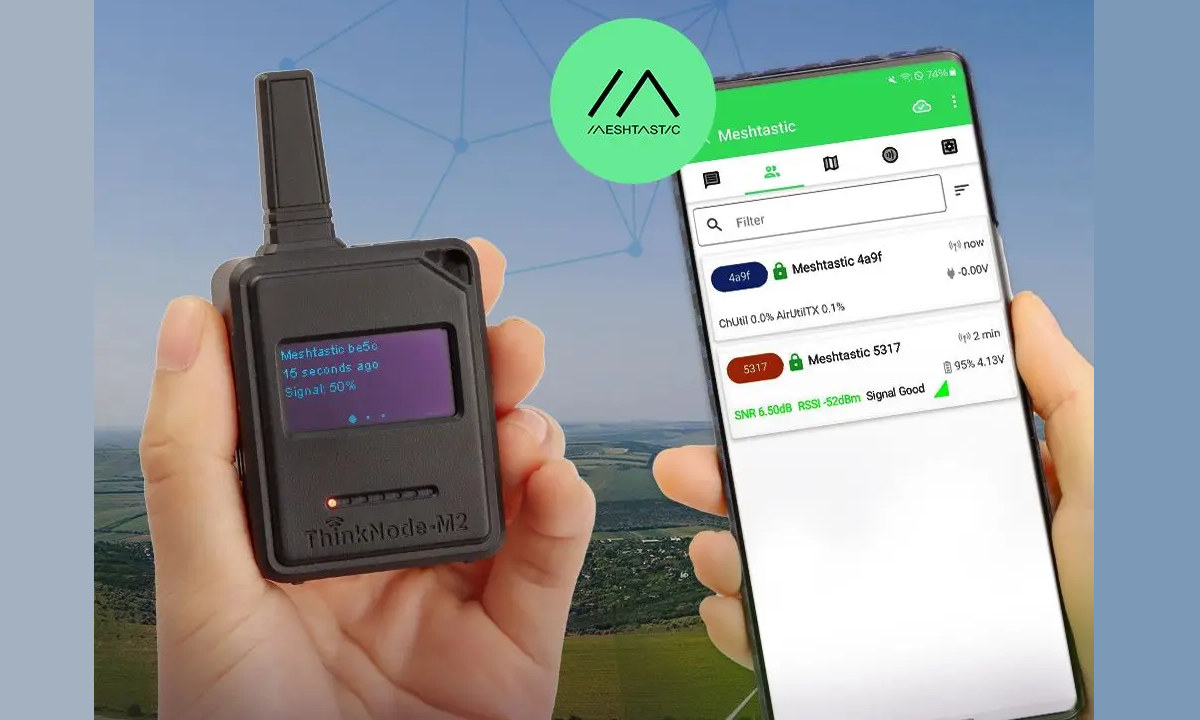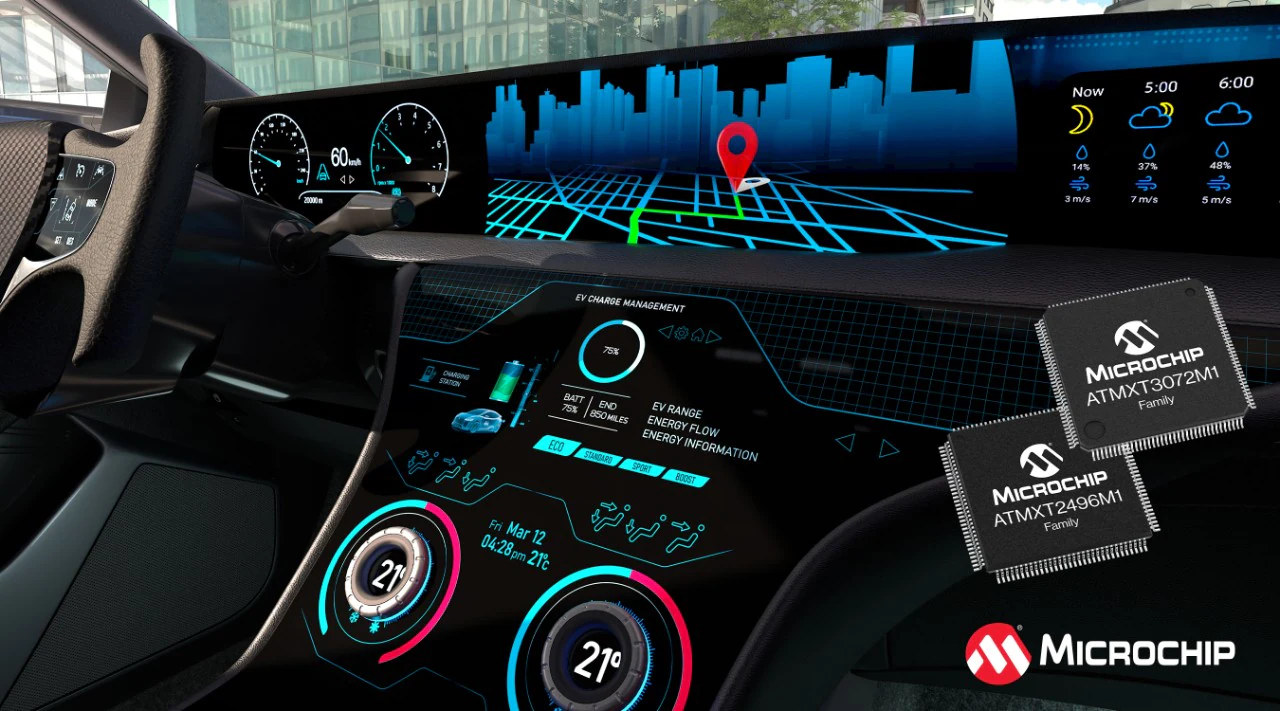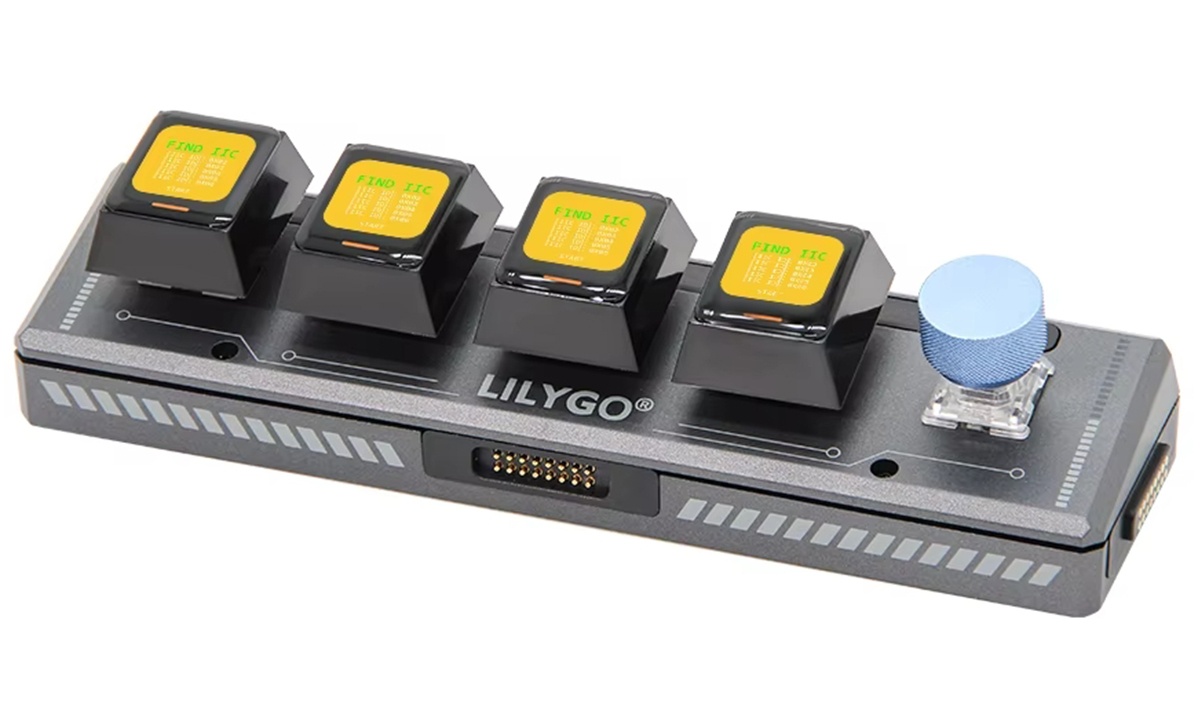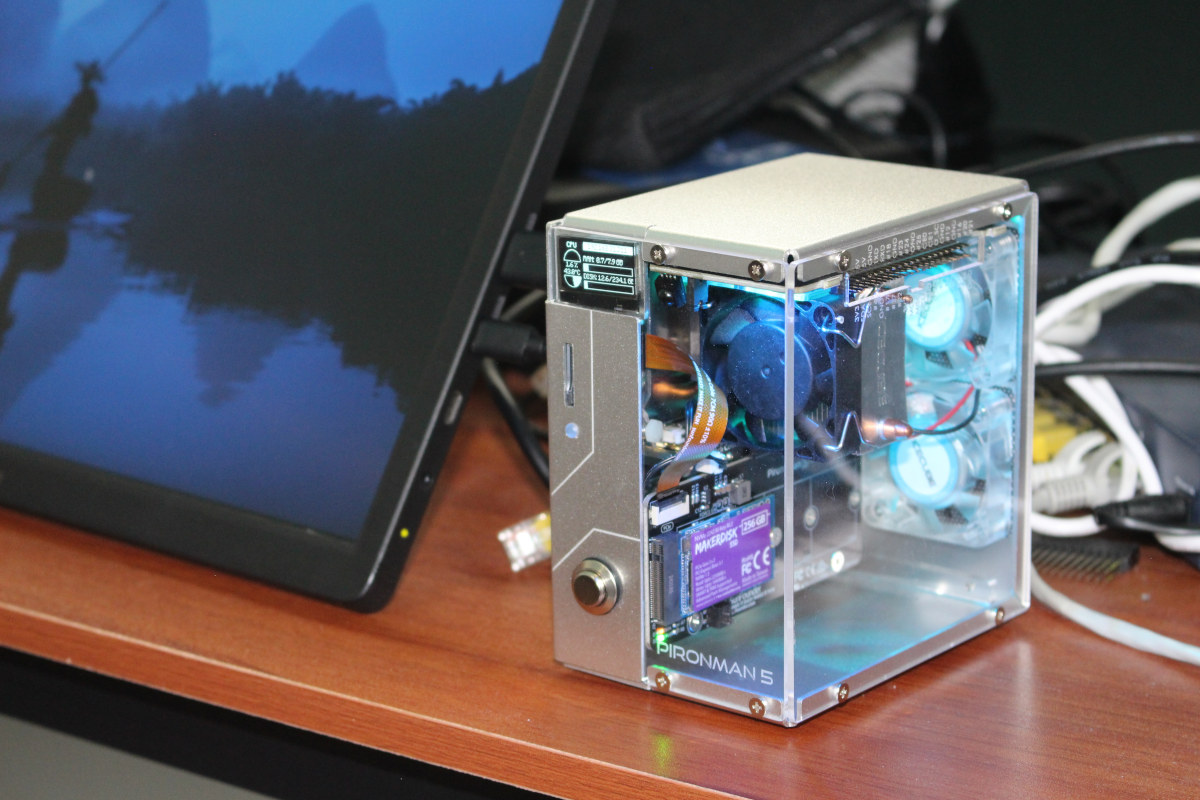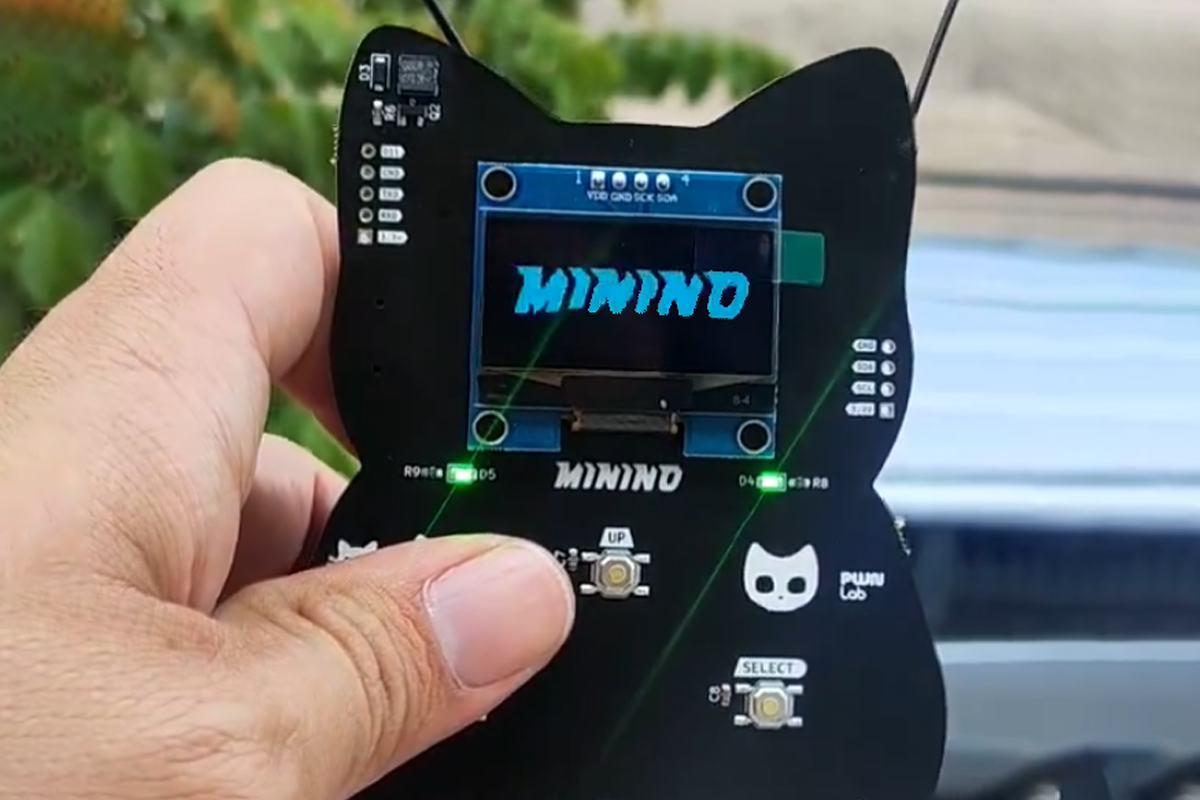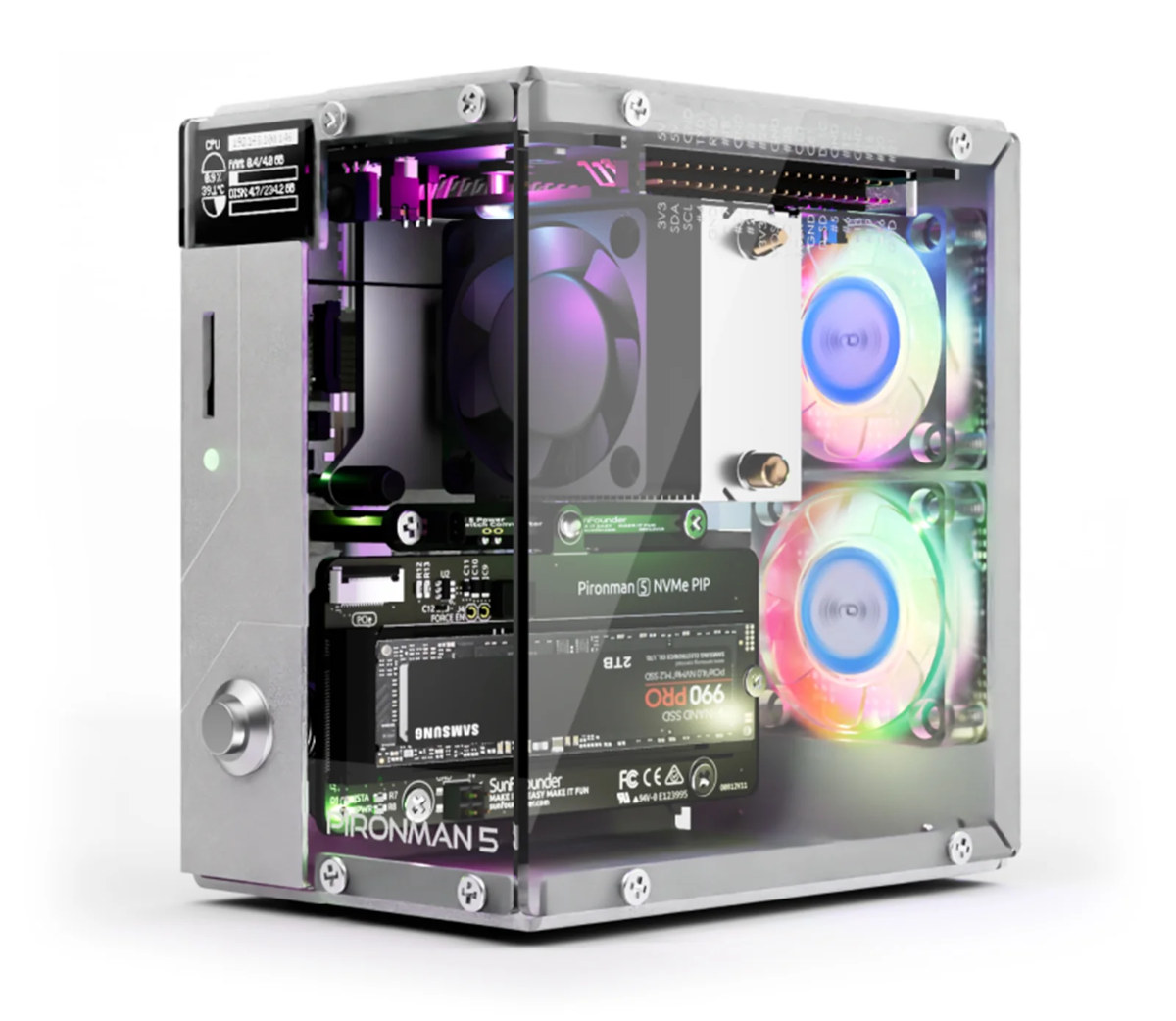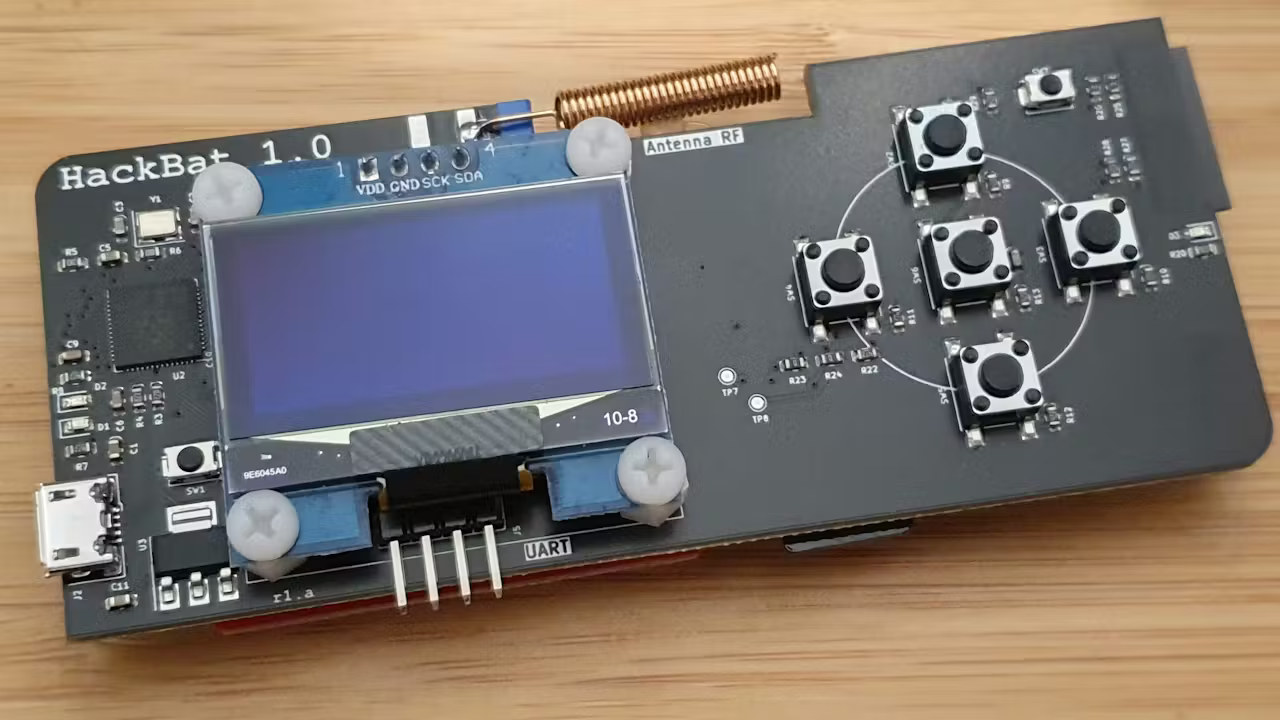“LILYGO MySondy GO LoRa32” is a small ESP32-PICO-D4 board with a 433 MHz LoRa module and a 0.96-inch OLED designed to track (RS41) radiosondes, which are units attached to weather balloons used to collect meteorological data like temperature, humidity, and atmospheric pressure. It looks to be an older TTGO T3 board with a 433 MHz LoRa32 module from the company preloaded with the MySondo firmware that allows hobbyists in the amateur radio and weather enthusiast communities to track weather balloons and potentially recover them. LILYGO MySondy GO LoRa32 specifications: SiP – Espressif Systems ESP32-PICO-D4 system-in-package with ESP32 dual-core Xtensa processor @ 240 MHz, 2.4GHz Wi-Fi and Bluetooth 4.2 dual-mode, 4MB flash LoRa module – LORA32 RF Transceiver – Semtech SX1268 connected over SPI to the ESP32 SiP Frequency – 433 MHz (The T3 board has options for 868 and 915 MHz, which I suspect are not suitable for radiosondes) Tx […]
ThinkNode M2 ESP32-S3-based Meshtastic handset features 1.3-inch OLED display, 1,000 mAh battery
Elecrow ThinkNode M2 is yet another Meshtastic handset for off-grid messaging and GPS coordinate sharing based on an ESP32-S3 module providing Bluetooth connectivity to a smartphone, and a Semtech SX1262 LoRa transceiver for low-power long-range wireless connectivity. It’s an evolution of the ThinkNode-M1, itself similar to the LILYGO T-Echo, based on a Nordic Semi nRF52840 Bluetooth module and SX1262 LoRa transceiver with an external antenna housed in a 3D printed enclosure. The new ThinkNode M2 is very similar but features a more powerful ESP32-S3 module instead, relies on a 1.3-inch OLED display instead of a 1.54-inch e-paper display, and is housed in an ABS plastic case. ThinkNode M2 specifications: Core module – ESP32-S3 module (looks to be ESP32-S3-WROOM-1 on the photo below) SoC – ESP32-S3 CPU – dual-core 32-bit microcontroller @ 240MHz Memory – 512KB SRAM, 8MB PSRAM Storage – 384KB ROM 4MB flash Wireless – 2.4GHz Wi-Fi and Bluetooth […]
New Microchip maXTouch M1 automotive touchscreen controllers support curved displays, physical Knob-on-Display technology
Microchip Technology’s ATMXT3072M1 and ATMXT2496M1 add to the existing maXTouch M1 automotive touchscreen controllers and are designed for large, curved, free-form displays, including ones using OLED and microLED technologies. These controllers support up to 112 reconfigurable touch channels (or 162 in ultra-wide mode), enabling touch functionality for displays up to 20-inch (16:9 format) or 34-inch (7:1 format) in size. Additionally, they use smart mutual touch acquisition to enhance signal-to-noise ratio (SNR) by +15 dB, ensuring reliable touch detection in high-capacitive environments. The controllers also feature integrated Knob-on-Display (KoD) technology for physical control knobs on touchscreens and low-latency haptic feedback for enhanced user interaction. The controls meet ASIL-A and B safety standards and support OTA firmware updates with SHA-512 authentication for cybersecurity compliance (ISO 21434:2021). All these features make these MCUs suitable for user-friendly infotainment and dashboard systems. Microchip ATMXT3072M1 and ATMXT2496M1 specifications Touchscreen channels ATMXT3072M1 – 112 fully configurable sensor […]
T-Keyboard-S3 Pro 4-Key USB mechanical keyboard adds rotary encoder, support for daisy-chaining up to six keyboards
Last year, we featured the T-Keyboard-S3, a USB mechanical keyboard with ESP32-S3, and four mechanical keys each fitted with a 0.85-inch color display. The upgraded T-Keyboard-S3-Pro adds a rotary encoder and four magnetic interfaces on each side controlked by an STM32G030 MCU to daisy-chain the host keyboard with up to 5 slave keyboards in a 3×2 grid. Previously, we featured the ANAVI Macro Pad 12, Macro Pad 10, and Macro Pad 2 programmable keyboards. Feel free to explore those as well. LILYGO T-Keyboard-S3 Pro specifications: Wireless module – ESP32-S3-WROOM-1 used in the host model only MCU – ESP32-S3R8 dual-core LX7 microprocessor @ up to 240 MHz with Vector extension for machine learning Memory – 8MB PSRAM Storage – 16MB SPI flash Connectivity – WiFi 4 and Bluetooth 5 with LE/Mesh PCB antenna Secondary MCU – STMicro STM32G030F6P6 for I2C magnetic connectors CPU – Arm 32-bit Cortex-M0+ CPU, frequency up to […]
Review of Pironman 5 mini PC case for the Raspberry Pi 5 SBC
SunFounder has sent me a review sample of the Pironman 5 tower PC case for the Raspberry Pi 5. I had already reviewed the Pironman case for Raspberry Pi 4 last year, so I’ll do something similar this time around with the new Pironman 5 case adding support for NVMe SSD using the PCIe interface from the Pi 5 SBC. The Pironman 5 review will include unboxing and an assembly guide, followed by software installation and features testing (e.g. OLED display, RGB LED control, remote control. soft power off, etc…), before testing the cooling efficiency of the device with some benchmarks. Pironman 5 unboxing The Pironman 5 comes in a package that will be smaller than most people expect. The main features are listed on the side with 5V/5A power input, a 0.96-inch OLED, a tower cooler, M.2 NVMe SSD support, an IR receiver, a CR1220 battery (included), four RGB […]
Minino ESP32-C6 board is designed for IoT security and penetration testing
Minino security tool is a kitty-shaped ESP32-C6 powered cybersecurity device for analyzing 2.4GHz communications and probing IoT devices. It supports Bluetooth Low Energy, Wi-Fi 6, Zigbee, Thread, and Matter, and has a dedicated GNSS radio for receiving signals from various satellite constellations. Minino is compatible with CatSniffer analysis tools and Wireshark software, and can log packet captures on a microSD card. These features make this suitable for applications like assessing IoT device security, network analysis, and wireless protocol research. We have previously written about similar IoT security and pen testing tools like the ESP8266 and ATmega32U4-based Diabolic Drive, the ESP32 Marauder Pocket Unit v2, the ThingPulse Pendrive S3, and many others, feel free to check those out if you are interested in the topic. Minino security tool specifications Wireless Module – ESP32-C6-WROOM-1U SoC – ESP32-C6 CPU Single-core 32-bit RISC-V clocked up to 160 MHz Low-power RISC-V core @ up to […]
Pironman 5 is a fancy tower PC case for the Raspberry Pi 5 with NVMe M.2 SSD, oversized fans, RGB LEDs
SunFounder Pironman 5 is an enclosure for the Raspberry Pi 5 SBC that looks like a small Tower PC equipped with two RGB LED fans and a tower cooler with a PWM fan for cooling, and support for an NVMe SSD drive through the company’s Pironman 5 NVMe PiP HAT+ expansion board. The case also includes a small OLED information display, a power button for safe shutdown, two full-size HDMI ports, a spring-loaded microSD card socket for easy insertion and removal, an IR receiver for media center applications, and externally accessible 40-pin GPIO header so users can still play with GPIO while the Raspberry Pi 5 is inside the case. Pironman 5 key features and specifications: Designed for the Raspberry Pi 5 SBC (a board like Radxa Rock 5C could be installed instead, but software for OLED display, RGB LEDs, fan control, etc… might be an issue) Storage Pironman 5 […]
HackBat – DIY open-source hardware Flipper Zero alternative features Raspberry Pi RP2040 MCU, ESP8266 WiFi module, RF transceiver…
HackBat is an open-source hardware pen-testing device designed for hackers and makers and equipped with a Raspberry Pi RP2040 microcontroller, an ESP8266 WiFi module, a sub-GHz RF transceiver, NFC, an OLED display, and more… It’s basically a DIY alternative to the popular Flipper Zero wireless hacking tool, that you can produce and assemble yourself. The Flipper Zero was the victim of its own success with the Canadian government (wrongly) claiming it could easily be used for car theft and planning to ban it (status still unclear right now), so Flipper Zero alternatives such as the M1 multitool device got some traction as backup solutions with some extra features. But any closed-source device could eventually be banned, something that’s close to impossible for an open-source hardware device like the HackBat although policymakers could still decide to impose heavy fines if they wanted to make this type of device illegal… HackBat key […]


